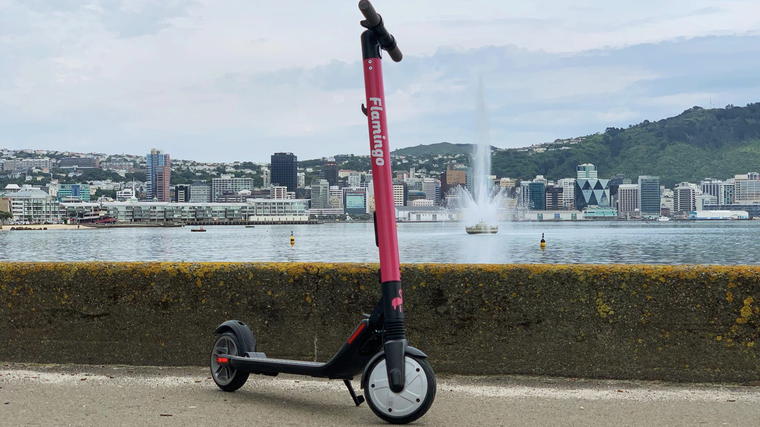Phase two of e-scooter trials begins

Auckland Council and Auckland Transport (AT) have completed an application process for the second phase of the e-scooter trials and have selected three successful operators from a total of five applicants - Lime, Wave and Flamingo.
Auckland Council Licensing and Regulatory Compliance general manager Craig Hobbs is leading the trial programme and says he is impressed with the way the programme has progressed since e-scooters were first suggested for Auckland’s streets.
"This time last year, we had barely heard of e-scooter ride-share schemes, let alone anticipated having fleets of e-scooters on our streets and footpaths."
"Since mid-October 2018, we have learned a huge amount about how these businesses work, public uptake and perception of e-scooters and how our own licensing framework supports micro-mobility ride-share initiatives like this.
"That work continues in this second phase trial where we will see how three operators share the market over six months," says Hobbs.
Auckland Transport CEO Shane Ellison says AT and the council have prioritised this trial for two important reasons.
"Micro-mobility modes of transport are becoming increasingly popular and are not something we can ignore. Ride-share scooters encourage people to connect with public transport and offer an alternative to cars for short trips."
"We are also seeing more and more privately-owned e-scooters across the city - which confirms that Aucklanders are embracing scooters as a transport mode and that we need to factor this into the transport equation in our region.
"Secondly, and equally as important, is safety. While we have little influence right now on the rules for where e-scooters can be ridden, how fast they can go and wear of helmets, we have done as much as we can to promote public safety.
"We will continue to work with operators to incentivise safe rider behaviour; we will monitor compliance with the licence conditions, especially around maintenance, responsible parking and incident management; and we will contribute what we learn, to safety improvements at a national level.
"We are also continuing our advocacy to central government for a national regulatory framework for e-scooters."
Operators offer limited speed zones
The new code of practice encourages operators to introduce slow-speed zones via geofencing. This automatically reduces the scooters’ speed in nominated areas, improving the safety of users and pedestrians.
Ellison says the council and AT cannot impose speed limits through this licencing process so operator-initiated geofencing is important for public safety.
"We were heartened to see that each operator proposed geo-fencing in their applications."
"Slow-speed zones in high use areas makes it safer for e-scooter users and pedestrians to share footpaths and for riders to use road and cycleways.
"Lowered speeds are also a reminder to scooter users that they are in an area where they must take extra care, always on the lookout for others."
The council has taken on board feedback from disability groups, including the vision impaired when recommending slow-speed zones - for example, the precinct around the Blind Foundation in Parnell.
New code of practice for e-scooter operations
Auckland Council and AT have updated the e-scooter share code of practice following Auckland’s first e-scooter trial. The new code of practice is informed by what the council and AT have learned during the first trial. Updates include:
- More stringent requirements on safety and risk management, incident reporting and investigation, and requirements to report on safety performance on a monthly basis.
- A requirement for detailed plans for regular maintenance and weekly maintenance checks.
- Slow speed zones, via geo-fencing, are encouraged but cannot be imposed by the council or AT.
- Changes made to the removal of non-compliantly parked scooters, which must be removed by the operator within three hours of being reported (operators previously had 12 hours to remove reported abandoned scooters).
- Rules for using e-scooters are set by NZTA under national road user rules. At present e-scooters can be ridden on the footpath or on the road and on separated cycleways (but not on painted, unprotected cycle lanes that are part of the road). There are no regulations in place for requiring the wearing of helmets while riding e-scooters although helmet wearing is recommended by NZTA.
After the trial
The second phase trial continues until October 31, after which the council and AT will evaluate the trial and look at options for the future.
"As well as evaluating operations over the six month period, we will be conducting some research, meeting with interest groups, engaging with our counterparts at other councils and looking at what we can contribute to work on micro-mobility at a central government level," adds Hobbs.
"If the outcome of this trial recommends e-scooter ride-share operations should continue to be licenced, we may also need to look at whether changes to our bylaw are required."





